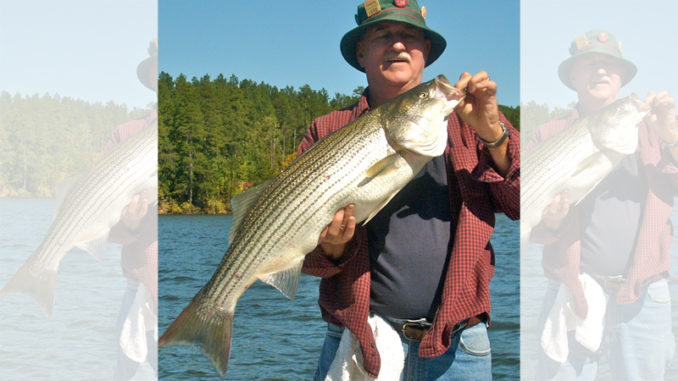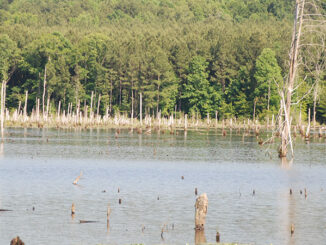
Spring run to upper end of lake produces great fish
Joe Jobin of Xtreme Striper Fishing divides April at North Carolina’s Lake Rhodhiss into two phases.The beginning of the month marks the first.
“The first two weeks of the month, I’ll be fishing the main body with downlines baited with live gizzard shad,” said Jobin (704-240-0165). “I’ll be target structure and deep holes in 20 to 34 feet of water.”
After April 15, Jobin moves to the river section and fishes the north and south banks up to the US18 bridge with planer boards — but just one bank at a time.
Jobin trolls the north bank, setting out a planer board as close to tree laps as possible without hanging. He also uses a free-line extending out from the middle of the stern. When he reaches the bridge, he turns around and heads south, trolling the other bank in the same manner.
“I troll one bank at a time because the river is narrow; if I let out lines close to both banks, a boat may come along and cut my lines,” he said.
Besides fishing tree laps near the banks, Jobin trolls areas where the sand has been dredged.
Electronics are crucial for finding Rhodhiss stripers
“The river is only 4 to 8 feet deep, but the dredged sand creates deep holes and pockets that attract stripers,” Jobin said. “These places can be found with your electronics.”
Jobin said the bite is better when the water is being generated, but a strong current could prevent him from trolling.
“When two or three gates are open, the current is so strong, I can’t slow-troll effectively; I’ll move too fast,” said Jobin. “I have to anchor down over the holes and pockets and drop my baits to the fish. If only one gate is open, that’s ideal for slow-trolling and for triggering the striper bite.”
Fishermen can check online (www.lakes.duke-energy.com) to find out how much Rhodhiss will be pulled on any given day.
Jobin’s tackle consists of 6 1/2-foot, heavy action spinning rods mounted with reels holding 17-pound line. The main line is connected to a 17-pound fluorocarbon leader with a No. 6 treble hook at the business end. One prong of the treble hook is placed through the nostril of the bait.
In April, with water temperatures ranging from 42 to 52 degrees, live-bait fishermen can keep gizzard shad fresh and alive with just some care.
Jobin said Rhodhiss stripers will run from 24 to 32 inches in April. Occasionally, fish larger than 32 inches are caught.




Be the first to comment